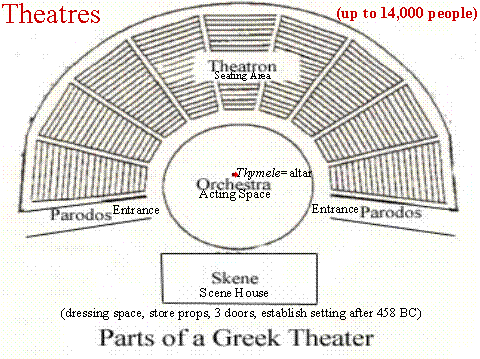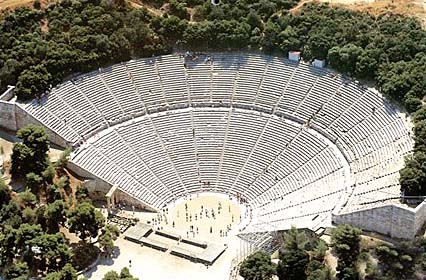
*classical Greek theatres probably sat somewhere between 15-17,000 people*
Theatron- means “viewing place”
Proedria (not shown)- the front row of seats, reserved for political and religious officials
Thymele- there may have been an altar at the center of the orchestra, a reminder of theatre’s religious roots and a possible scenic element
Skene- in its early stages, was probably a wooden structure. Later it was constructed of stone, but probably only a single story high. As things progressed, it is believed that the skene developed into a two-story structure. It is also believed that the skene had three doors, though possibly only one. As the skene developed, so did its uses (see above)
Paraskenia- side wings for the skene
All theatres were outdoors...
 |
 |
This, and the large size of the theatres, led to some creative technical innovations in the areas of sound and lighting.